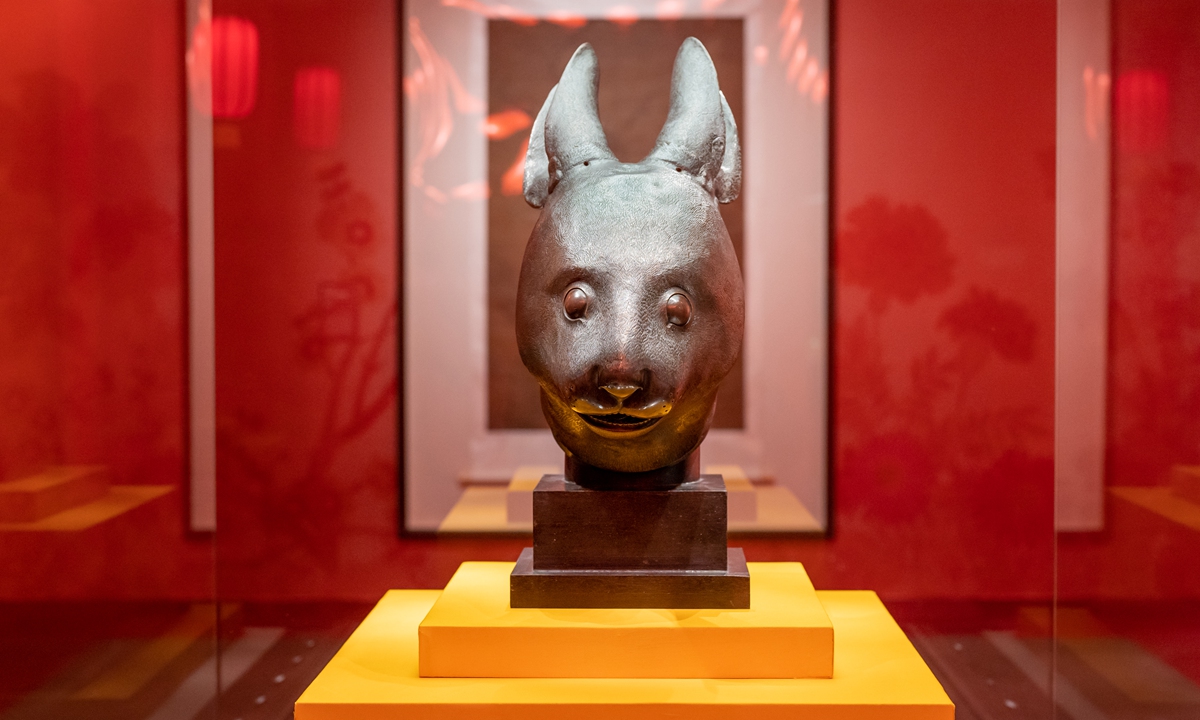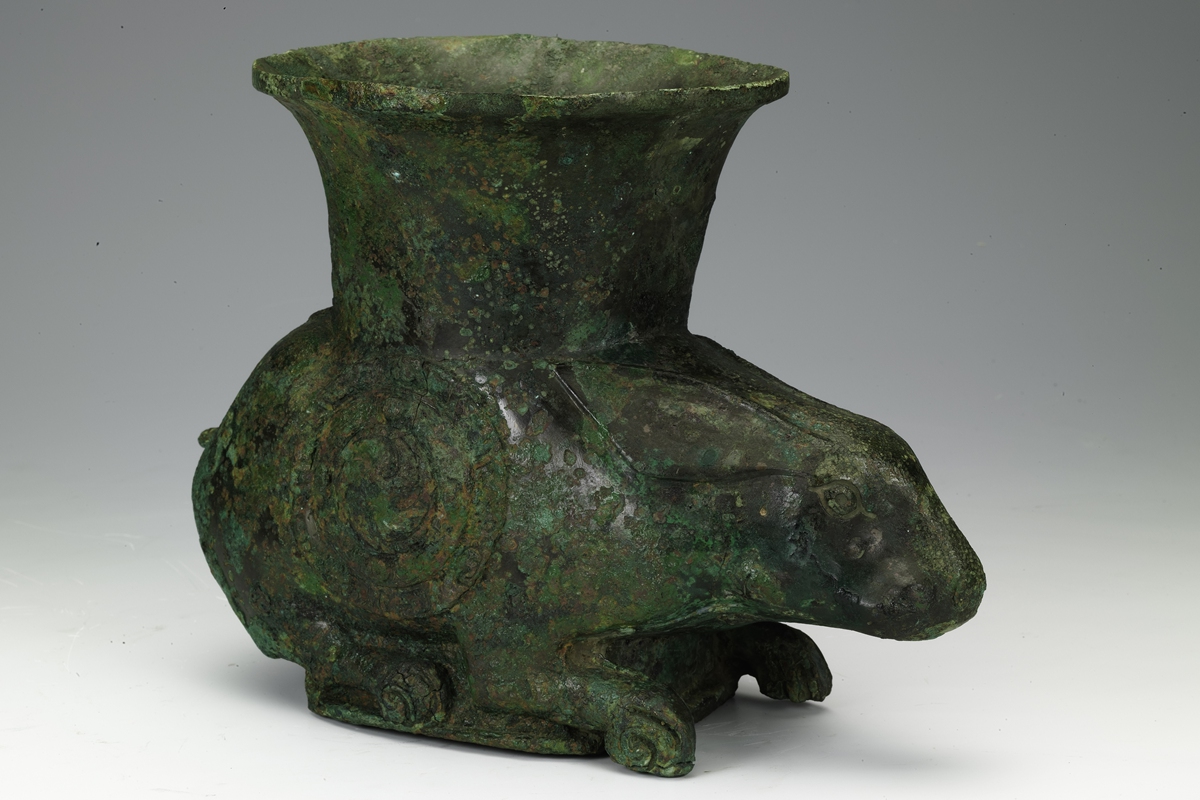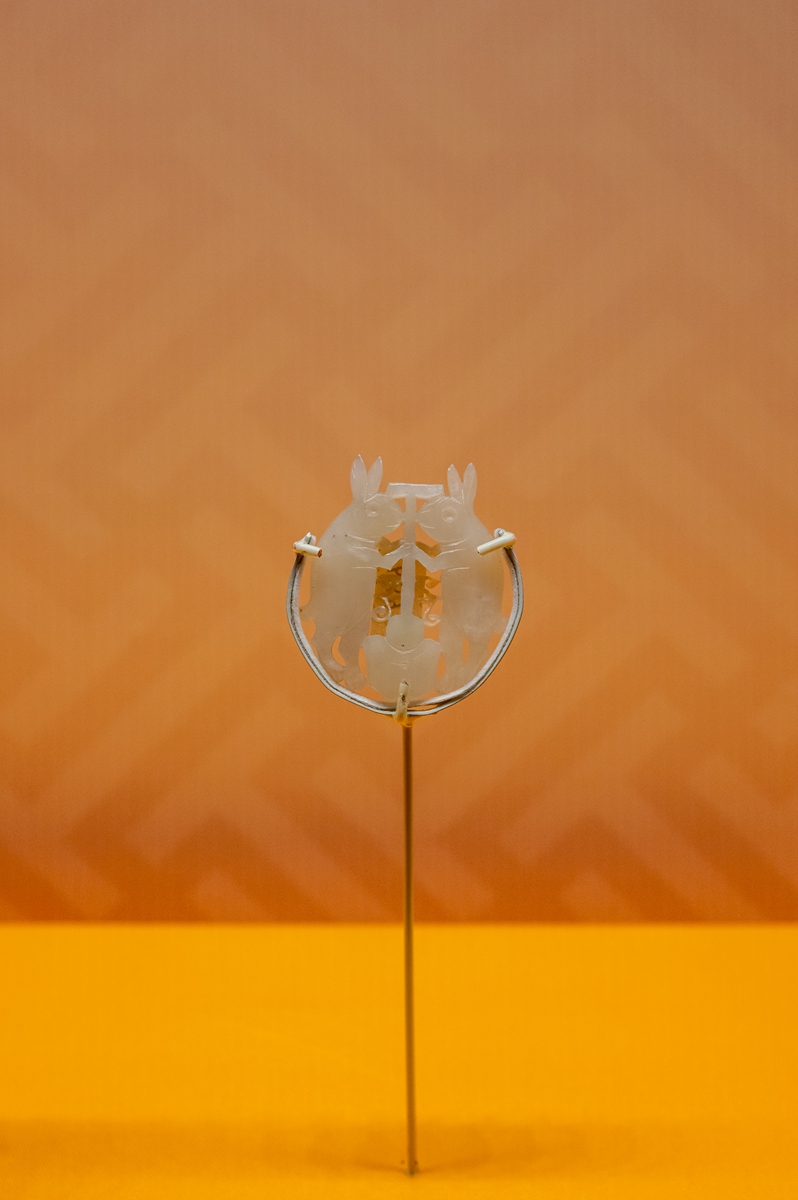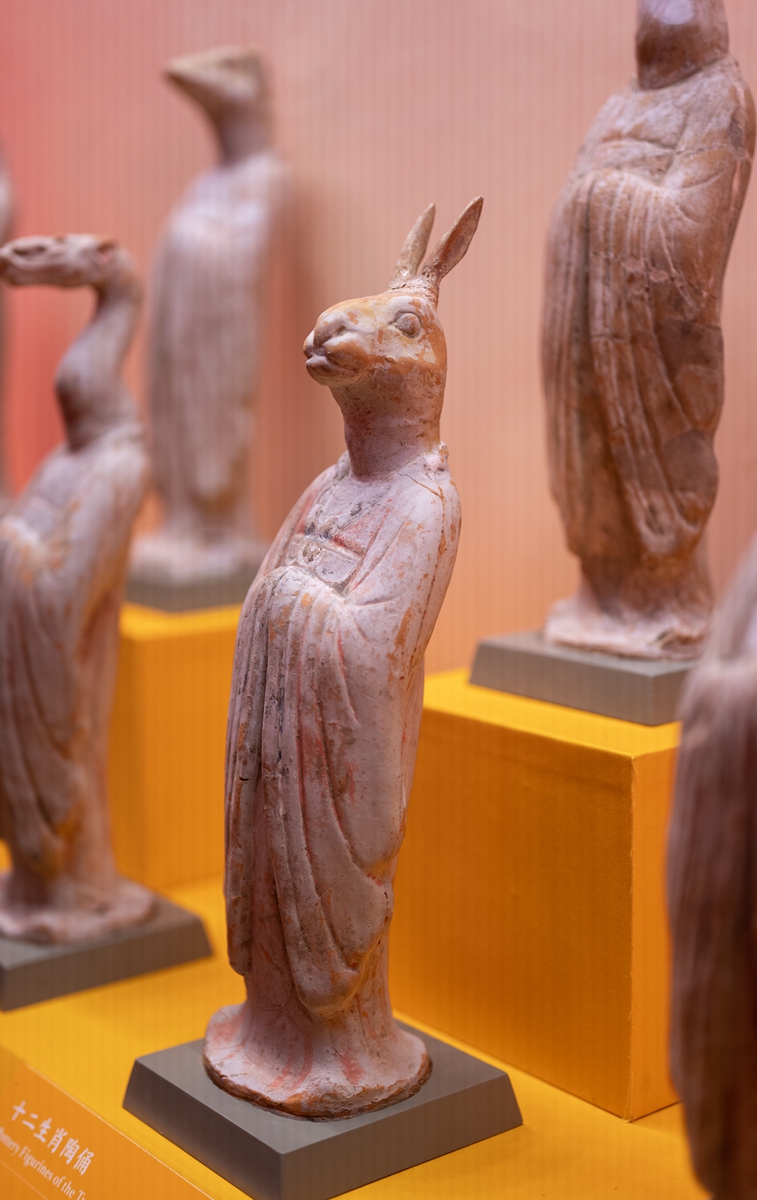
A bronze rabbit head sculpture looted from the Old Summer Palace by Anglo-French Allied Forces in 1860 Photo: VCG
At numerous museums throughout China, exhibitions displaying thousands-year-old cultural relics featuring rabbits have been packed with crowds who have been enchanted by the charm of these auspicious relics that are full of the wisdom of the ancients.
The 2023 Spring Festival marked the beginning of the Year of the Rabbit. The rabbit zodiac signifies hope, resilience, longevity, wit and kindness. Thanks to these auspicious meanings, ancient Chinese produced a lot of exquisite cultural relics shaped like rabbits or hares using various mediums such as bronze, ceramics, jade, crystal and wood.
In the Shanxi Museum in Taiyuan, North China's Shanxi Province, three 3,000-year-old hare-shaped
zun (wine vessel) have captured the attention of tourists. Unearthed in 1992 from Tomb M8 in the Cemetery of Marquis Xian of the Jin State in Quwo county, Shanxi Province, the three bronze wares look like hares that are taking a rest, with their legs underneath their bodies and ears laid back along their backs. Hollow to hold wine, the hares are decorated with whirl, eye and thunder patterns.

A 3,000-year-old hare-shaped zun (wine vessel) Photo: Courtesy of Shanxi Museum
Marvels of craftsmanshipZhao Zhiming, deputy curator of the Shanxi Museum, told the Global Times on Sunday that hare
zun are a rare type of bronze ware and a real marvel of craftsmanship. Chinese archaeologists have only found seven hare
zun across the country to date, making them priceless relics. The other four were excavated from the tomb of Marquis Mu of the Jin State (the son of Marquis Xian) and are currently part of the collection at the Jinguo Museum in Shanxi Province. Plant residue was found in these vessels, showing that they were probably used for wine making or consumption.
"There is still no clear answer as to why the two Jin marquises were so keen about the animal, but academia speculate that it is likely linked to the hare's auspicious meaning: The ancients often incorporated the image of the rabbit or hare into their lives, hoping to bring themselves good luck," he said.
Another rabbit-shaped relic discovered in a Ming Dynasty (1368-1644) imperial tomb in Beijing is an earring that shows fine jade craftsmanship.
The ring part of the earring is made of gold and is linked to a rabbit made of jade. Although the rabbit is only around 2 centimeters high, it has been carved into a vivid rabbit with red ruby eyes pounding Chinese medicine with a pole.
Zheng Hongyan, the representative of the Ming Dynasty Tombs, explained that the relic was made of "goat fat" jade, a type of nephrite jade that is very challenging to carve.
Niu Lili, an expert of ancient Chinese clothing, told the Global Times that the inclusion of the pole gives this piece an added "narrative" layer that represents the rabbit zodiac's symbolic meaning of love for others and good wishes.
"It belonged to the Empress Dowager Xiaojing. This gold and jade combination is called jin yu liang yuan in Chinese, meaning 'good partnership.' It symbolizes love and affection."
Niu also noted that the carving details represent the Ming Dynasty's jade wisdom as well as its reputation for having the "best aesthetics" in Chinese art.

A Ming Dynasty (1368-1644) jade featuring two rabbits Photo: VCG
Human-animal harmonyBesides its beautiful symbology, the rabbit often appears as part of the 12 zodiac animals as a sign of human-animal harmony.
In the National Museum of China, the bronze head of a rabbit has been put on display during the Spring Festival. The head was once one of the fountain heads for a zodiac water clock in Yuanmingyuan, or the Old Summer Palace, but was ripped from its statue when the palace was razed by the Anglo-French Allied Forces in 1860.
Similarly, a pottery hare figurine from the Tang Dynasty (618-907) in the Shaanxi History Museum is on display alongside its 11 other zodiac brethren. Experts say that unlike other rabbit relics that tend to focus only on the animal itself, the Tang piece shows how nature-human coexistence was part of ancient Chinese people's belief system.
Chi Dongxu, a Tang Dynasty archaeology expert, told the Global Times on Saturday that the most interesting aspect of the relic is its modeling - a human body with a hare head.
The head of the roughly 40-centimeter-tall sculpture has the iconic long ears of a rabbit, but sits upon the body of a person wearing the wide-sleeve robes of a civil official.
Jiang Tao, a representative from the museum, said that the zodiac figurine was put in ancient tombs to ward off evil and bring safety, and shows how zodiac culture was applied in ancient Chinese people's everyday lives.
"The personification of animals can be found in many Chinese civilizations. The rabbit is considered as "wise," "loyal" and "peaceful," qualities that Chinese people pursue both in their social lives and politics," said Chi.

A ceramic figurine of the rabbit zodiac on display at the National Museum of China Photo: VCG







